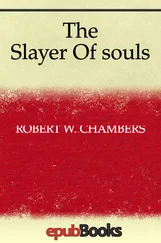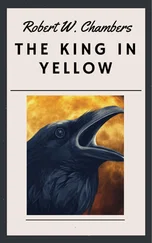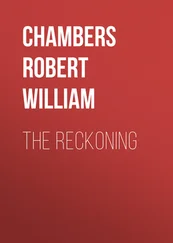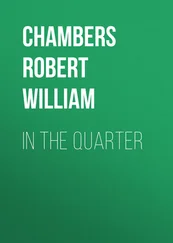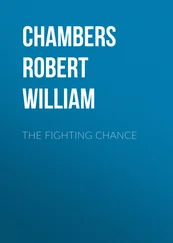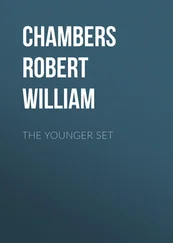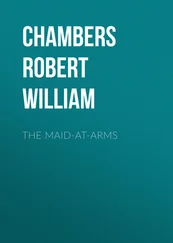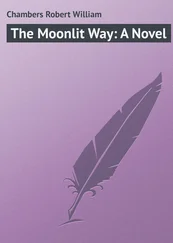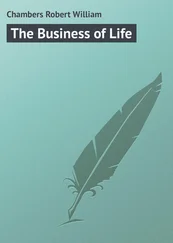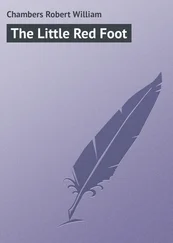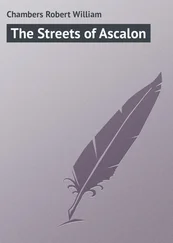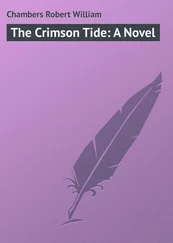"I—I don't believe it is going to be so very difficult to translate them."
"Great guns!" said the Captain. "Do you mean to say that you can ultimately translate that cipher?"
The Tracer smiled. "Let's examine it for repetitions first. Here we have this symbol
Cryptographic symbol
repeated five times. It's likely to be the letter E. I think—" His voice ceased; for a quarter of an hour he pored over the symbols, pencil in hand, checking off some, substituting a letter here and there.
"No," he said; "the usual doesn't work in this case. It's an absurdly simple cipher. I have a notion that numbers play a part in it—you see where these crossed squares are bracketed—those must be numbers requiring two figures—"
He fell silent again, and for another quarter of an hour he remained motionless, immersed in the problem before him, Harren frowning at the paper over his shoulder.
"Come!" said the Tracer suddenly; "this won't do. There are too few symbols to give us a key; too few repetitions to furnish us with any key basis. Come, Captain, let us use our intellects; let us talk it over with that paper lying there between us. It's a simple cipher—a childishly simple one if we use our wits. Now, sir, what I see repeated before us on this sheet of paper is merely one of the forms of a symbol known as Solomon's Seal. The symbol is, as we see, repeated a great many times. Every seal has been dotted or crossed on some one of the lines composing it; some seals are coupled with brackets and armatures."
Cryptographic symbol
"What of it?" inquired Harren vacantly.
"Well, sir, in the first place, that symbol is supposed to represent the spiritual and material, as you know. What else do you know about it?"
Cryptographic symbol
"Nothing. I bought a book about it, but made nothing of it."
"Isn't it supposed," asked Mr. Keen, "to contain within itself the nine numerals, 1, 2, 3, 4, 5, 6, 7, 8, 9, and even the zero symbol?"
"I believe so."
" Ex actly. Here's the seal
Cryptographic symbol
Now I'll mark the one, two, and three by crossing the lines, like this:
one,
Cryptographic symbol
two,
Cryptographic symbol
three,
Cryptographic symbol
Now, eliminating all lines not crossed there remains
the one,
Cryptographic symbol
the two,
Cryptographic symbol
the three,
Cryptographic symbol
And here is the entire series:
Cryptographic symbols
and the zero—"
Cryptographic symbol
A sudden excitement stirred Harren; he leaned over the paper, gazing earnestly at the cipher; the Tracer rose and glanced around the room as though in search of something.
"Is there a telephone here?" he asked.
"For Heaven's sake, don't give this up just yet," exclaimed Harren. "These things mean numbers; don't you see? Look at that!" pointing to a linked pair of seals,
Cryptographic symbol
"That means the number nineteen! You can form it by using only the crossed lines of the seal.
Cryptographic symbol
Don't you see, Mr. Keen?"
"Yes, Captain Harren, the cipher is, as you say, very plain; quite as easy to read as so much handwriting. That is why I wish to use your telephone—at once, if you please."
"It's in my bedroom; you don't mind if I go on working out this cipher while you're telephoning?"
"Not in the least," said the Tracer blandly. He walked into the Captain's bedroom, closing the door behind him; then he stepped over to the telephone, unhooked the receiver, and called up his own headquarters.
"Hello. This is Mr. Keen. I want to speak to Miss Borrow."
In a few moments Miss Borrow answered: "I am here, Mr. Keen."
"Good. Look up the name Inwood. Try New York first—Edith Inwood is the name. Look sharp, please; I am holding the wire."
He held it for ten full minutes; then Miss Borrow's low voice called him over the wire.
"Go ahead," said the Tracer quietly.
"There is only one Edith Inwood in New York, Mr. Keen—Miss Edith Inwood, graduate of Barnard, 1902—left an orphan 1903 and obliged to support herself—became an assistant to Professor Boggs of the Museum of Inscriptions. Is considered an authority upon Arabian cryptograms. Has written a monograph on the Herati symbol—a short treatise on the Swastika. She is twenty–four years of age. Do you require further details?"
"No," said the Tracer; "please ring off."
Then he called up General Information. "I want the Museum of Inscriptions. Get me their number, please." After a moment: "Is this the Museum of Inscriptions?"
* * * * *
"Is Professor Boggs there?"
* * * * *
"Is this Professor Boggs?"
* * * * *
"Could you find time to decipher an inscription for me at once?"
* * * * *
"Of course I know you are extremely busy, but have you no assistant who could do it?"
* * * * *
"What did you say her name is? Miss Inwood?"
* * * * *
"Oh! And will the young lady translate the inscription at once if I send a copy of it to her by messenger?"
* * * * *
"Thank you very much, Professor. I will send a messenger to Miss Inwood with a copy of the inscription. Good–by."
He hung up the receiver, turned thoughtfully, opened the door again, and walked into the sunlit living room.
"Look here!" cried the Captain in a high state of excitement. "I've got a lot of numbers out of it already."
"Wonderful!" murmured the Tracer, looking over the young man's broad shoulders at a sheet of paper bearing these numbers:
9—14—5—22—5—18—19—1—23—25—15—21—2—21—20—15—14—3—5— 9—12—15—22—5—25—15—21—5—4—9—20—8—9—14—23—15—15—4.
"Marvelous!" repeated the Tracer, smiling. "Now what do you suppose those numbers can stand for?"
"Letters!" announced the Captain triumphantly. "Take the number nine, for example. The ninth letter in the alphabet is I! Mr. Keen, suppose we try writing down the letters according to that system!"
"Suppose we do," agreed the Tracer gravely.
So, counting under his breath, the young man set down the letters in the following order, not attempting to group them into words:
INEVERSAWYOUBUTONCEILOVEYOUEDITHINWOOD.
Then he leaned back, excited, triumphant.
"There you are!" he said; "only, of course, it makes no sense." He examined it in silence, and gradually a hopeless expression effaced the animation. "How the deuce am I going to separate that mass of letters into words?" he muttered.
"This way," said the Tracer, smilingly taking the pencil from his fingers, and he wrote: I—NEVER—SAW—YOU—BUT—ONCE. I—LOVE—YOU. EDITH INWOOD.
Then he laid the pencil on the table and walked to the window.
Once or twice he fancied that he heard incoherent sounds behind him. And after a while he turned, retracing his steps leisurely. Captain Harren, extremely pink, stood tugging at his short mustache and studying the papers on the desk.
"Well?" inquired the Tracer, amused.
The young man pointed to the translation with unsteady finger. "W–what on earth does that mean?" he demanded shakily. "Who is Edith Inwood? W–what on earth does that cryptogram mean on the window pane in the photograph? How did it come there? It isn't on my window pane, you see!"
The Tracer said quietly: "That is not a photograph of your window."
"What!"
"No, Captain. Here! Look at it closely through this glass. There are sixteen small panes in that sash; now count the panes in your window—eight! Besides, look at that curtain. It is made of some figured stuff like chintz. Now, look at your own curtain yonder! It is of plain velour."
Читать дальше

